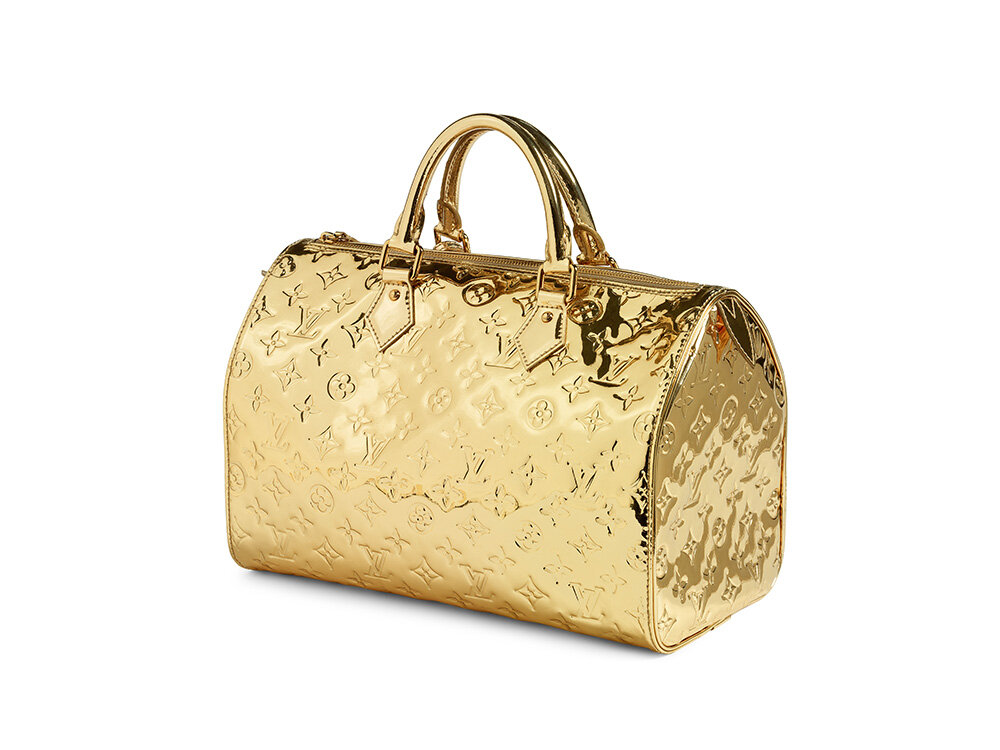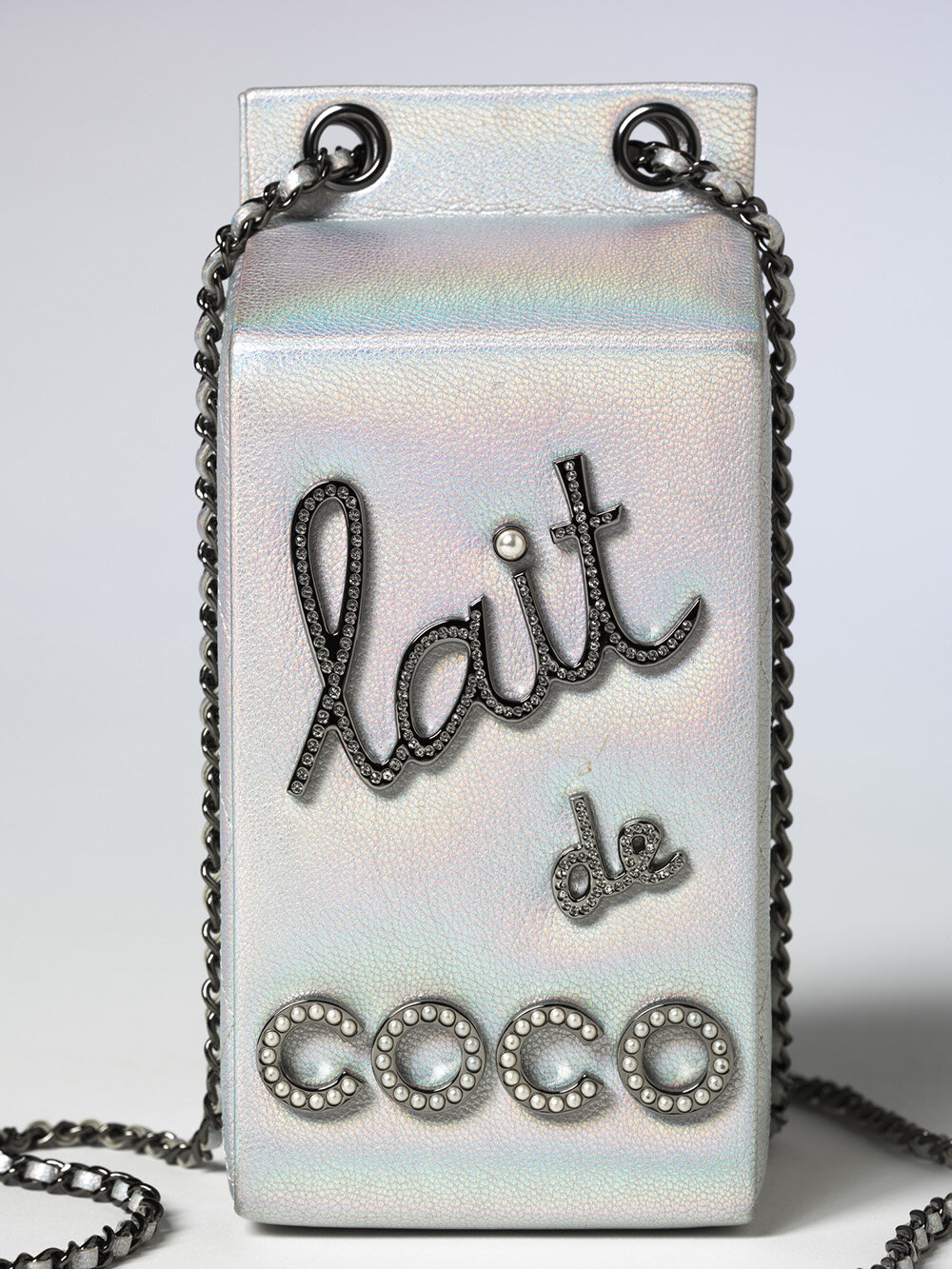BAGS: INSIDE OUT!
Here’s a preview of the much anticipated Bags: Inside Out exhibition at the V&A museum. Sponsored by British brand Mulberry, the V&A says the event will be ‘the UK’s most comprehensive exhibition dedicated to the ultimate accessory’.
Handbag aficionados will have to wait until November 21 to visit Bags: Inside Out but tickets are on sale now at the V & A website. So steal a march to guarantee your place!
Bags: Inside Out will explore the function, status and craftsmanship of bags. Examined through around 300 objects varying in scale from tiny purses held on a fingertip to luxurious travel trunks, this thematic exhibition will explore the worldwide heritage of these highly covetable objects from the 16th century to today.
The exhibition is in three parts. Firstly, Function will examine bags as practical objects designed to hold our belongings. From holiday outfits to confidential documents, make-up to money and even gas masks, the design and materials of our bags often reflect their intended purpose as functional objects.
Burse for the Great Seal of England 1558-1603. Silk, silver-gilt thread, sequins and glass beads. This densely embroidered burse protected the silver matrix of Elizabeth I’s Great Seal of England. Matrices were used to make wax seal impressions that were applied to decrees, charters and royal proclamations.
Rare exhibits include a large embroidered ‘burse’ used to protect the silver matrix of Elizabeth I’s Great Seal of England; a gas mask bag owned by HRH Queen Mary during the Second World War, Winston Churchill’s red despatch box and Vivien Leigh’s attaché case.
Louis Vuitton’s Creative Director Marc Jacobs debuted his ‘Monogram Miroir’ collection of handbags during the brand’s Autumn-Winter 2006 runway show. This ‘Speedy’ example made from gold reflective vinyl is embossed with the famous monogram. Highly sought after, the mirrored bags were popularised by celebrities such as Paris Hilton and Kim Kardashian during the ‘It bag’ craze of the early 2000s.
Next up, Status and Identity will look at the central role of the bag in celebrity culture. Featuring a Hermès ‘Kelly’, and a Lady Dior handbag named after Princess Diana, the exhibition will explore the powerful and influential world of celebrity endorsement. Fuelling the ‘It bag’ phenomenon of the late 1990s and early 2000s, this particular synergy has helped to drive luxury bag sales and propel certain designs to icon status. The Fendi ‘Baguette’ bag worn by (and stolen from) Sarah Jessica Parker in one of Sex and the City’s most famous scenes will sit alongside a gold Louis Vuitton ‘Monogram Miroir’ Speedy bag by Marc Jacobs, popularised by Paris Hilton and Kim Kardashian.
'Baguette' bag worn by Sarah Jessica Parker in Sex and the City. Leather, sequins, metal, 2000, Italy. The Fendi Baguette has been heralded as the first global ‘It bag’. It has been reported that around 600,000 Baguette handbags were sold between 1997 and 2007. Its status was elevated by TV character Carrie Bradshaw who, while being robbed of her purple sequin version in a 1997 episode of Sex and the City, famously corrected the thief by saying, ‘It’s a Baguette’.
The use of bags as a blank canvas for slogans, personal statements and political messages will be represented through objects including an anti-slavery reticule bag from 1825 and the legendary I am NOT a Plastic Bag tote by Anya Hindmarch
The final section of the show will look at the Design and Making process from sketch to sample, sewing to selling. With material specialists stationed in different locations around the world and skills passed down within century-old fashion houses, this section will lift the lid of the ingenuity employed by leading brands. A ‘maker’s table’ will allow visitors to get up close and personal with bag-making processes and materials alongside newly commissioned interviews with designers and makers. Sketches, samples and prototypes from international fashion houses and UK brand Mulberry will show the innovative early stages of the design process.
Explored through the design process, this section will examine the experimental forms created by designers and the bag’s role as an object of whimsical subversion as well as an opportunity for artistic collaboration. A 17th century purse in the shape of a frog, and a Chanel bag transformed into a milk carton will explore the surrealism and humour evoked through accessories. Collaborations between fashion designers, artists and architects have resulted in innovative and often limited-edition collections such as Prada’s nylon bag reinvented by Japanese architect Kazuyo Sejima, and the ‘International Woman’ suitcase by Tracey Emin for Longchamp.
‘Frog’ purse 1600s, England. Silk, metal threads, and glass beads. A number of 17th century purses survive in museum collections in the shape of fruits and small animals, including bunches of grapes, open nuts and frogs. They could have been used as ‘sweet bags’ and filled with scented herbs, dried flowers or sweet-smelling powders or as wrapping for a gift
Karl Lagerfeld for Chanel ‘Lait de Coco’ evening bag Autumn-Winter 2014, Paris. This evening bag in the shape of a milk carton was featured in Chanel’s supermarket-inspired Autumn-Winter 2014 collection and designed by Karl Lagerfeld. The bag features many of the classic Chanel symbols such as quilting, interlocking CC motif and pearls.
A look to the future will finish the exhibition with designers experimenting with innovative and environmentally sustainable materials including a Stella McCartney backpack made from recycled ocean plastic waste.
In the words of Lucia Savi, curator of Bags: Inside Out, ‘From a lavish 16th century burse made for royalty, to the everyday tote bag, this exhibition offers an understanding and insight into the function, status, design and making of bags across the world and throughout history. These portable, yet functional accessories have long fascinated men and women with their dual nature that combines private and public. By exploring their continuing importance in our lives and as part of the history of design the exhibition highlights the V&A’s mission to illuminate the past and inspire designers of the future.’
#BagsInsideOut
Gallery 40, V&A
Tickets: https://www.vam.ac.uk/exhibitions/bags
Twitter: @V_and_A
Instagram: @vamuseum
Facebook: @VictoriaandalbertMusuem





